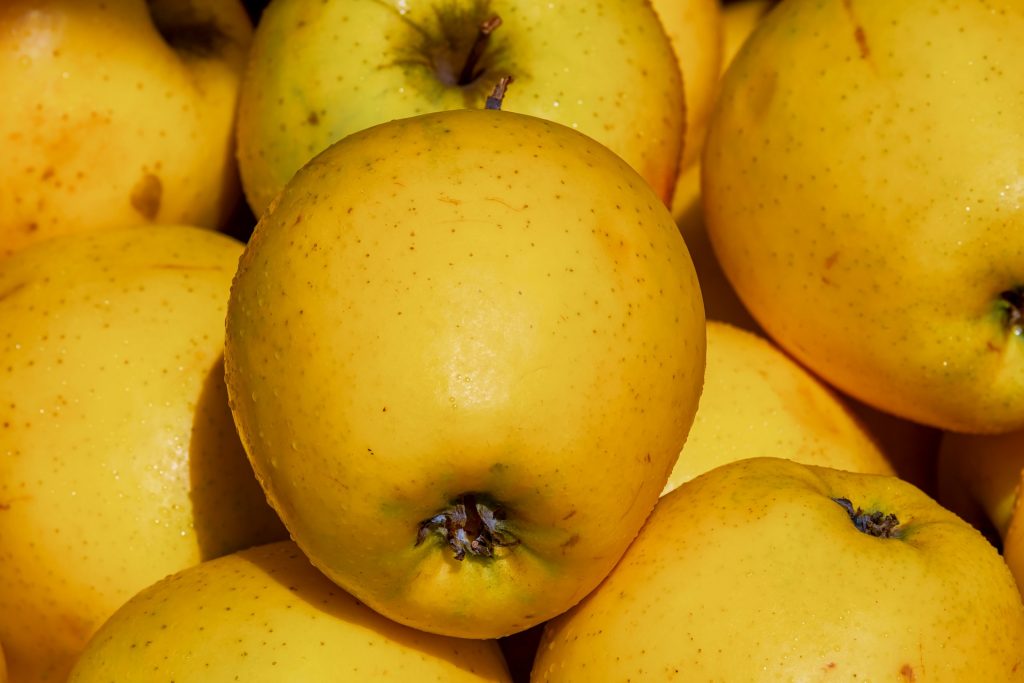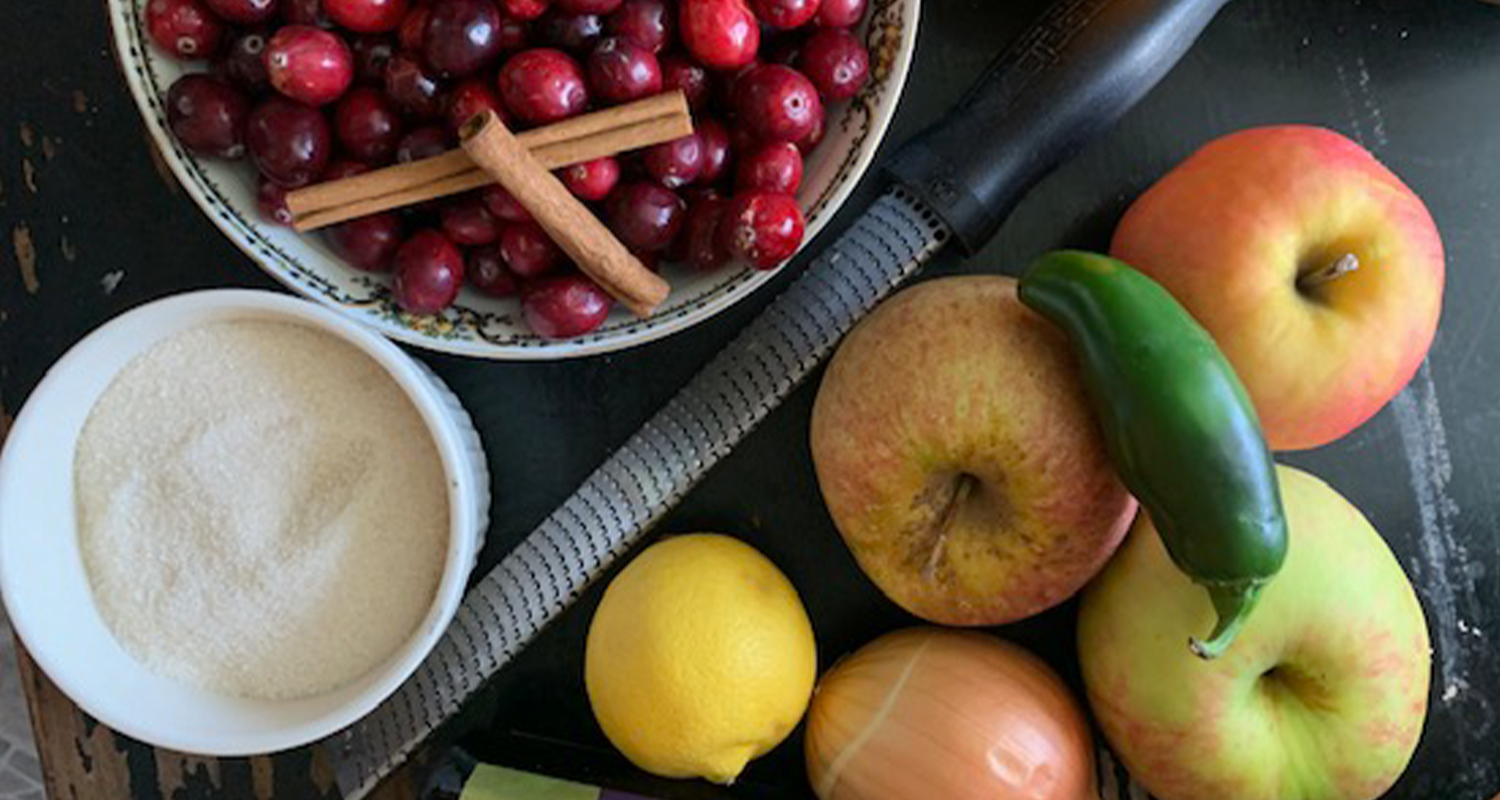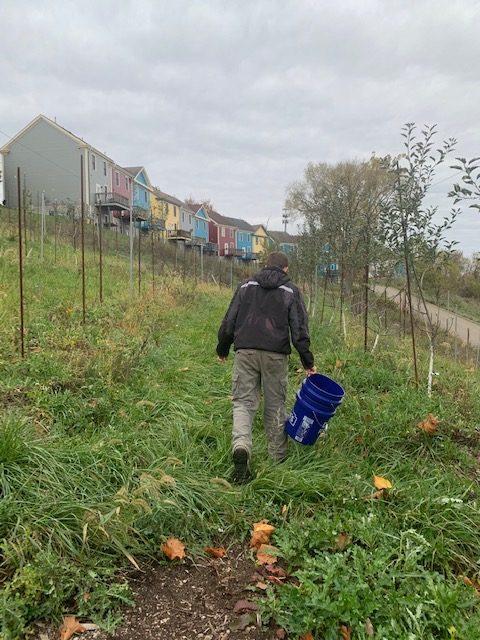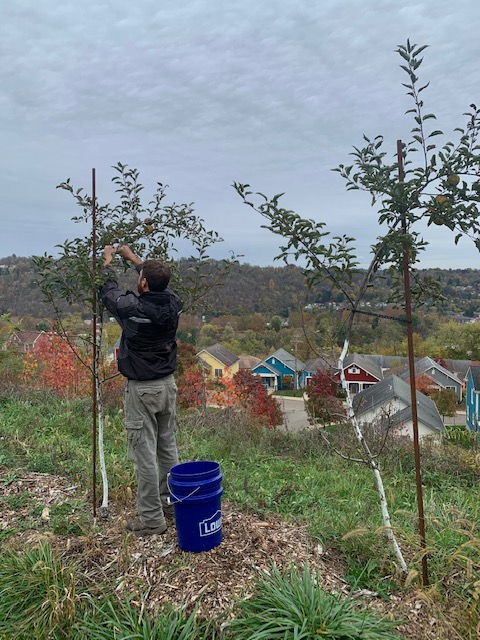We’ve slowly transitioned into the apple season here in West Virginia as the popular fall storage fruit steals the spotlight from summer berries and sustains our sweet tooth through the cold winter months.
An heirloom or heritage cultivar of a fruit or vegetable is one that has been maintained through the years by farmers and gardeners but not usually grown on a widespread commercial scale. West Virginia has a long history of apple growing dating back to the early 1800s and Johnny Appleseed. John Chapman, known as “Johnny Appleseed” discovered the Grimes Golden Apple in Brooke County (Wellsburg) in 1804. The Grimes Golden is still sold and grown today for its superior flavor. It’s a medium-sized fruit with a tart, citrusy flavor. It’s an excellent choice for pies, applesauce and snacking.
The Grimes Golden is said to be the parent of the Golden Delicious apple which was also discovered in Clay County West Virginia in 1912. The Golden Delicious became the preferred cultivar because of its uniformity and high yields. In 1995, the Golden Delicious was named the state apple of West Virginia.

As a young child, I had the perception that Johnny Appleseed traveled around sowing ACTUAL SEEDS, however, apples don’t grow true from seed. In fact, if you planted an apple seed in your yard, you’d grow something mostly inedible and closer to a crabapple than a pie apple. As with other tree fruits, apple trees are propagated by grafting a scion (cutting from the variety you wish to grow) to a hearty rootstock. Many modern orchards prefer to propagate heritage cultivars due to the vigor of their growth and their natural resistance to modern diseases and pests.
Right here in Wheeling, Grow Ohio Valley has a young orchard containing 47 different apple varieties of varying maturities. The Grow Ohio Valley orchard, managed by Isa Hufton, focuses on Dwarf trees. These trees are pruned to a shorter height for ease of management and can be planted closer together for a higher yield on a smaller urban plot. Hufton says the orchard was planted not only to provide food, but as an educational space to host workshops for the community. Planting, pruning, nutrition, organic disease and pest management are all essential skills to learn if you’d like to have a successful fruiting backyard orchard. Grow Ohio Valley is focusing on heirloom varieties of apples in their Grandview orchard, and I was pleasantly surprised to learn they have planted Northern Spies, my personal favorite apple for snacking on and fall/winter pies.
Growing up in New York State, apples are kind of a big deal in the fall/winter. Many cultivars grown in the North are storage apples. They are picked early in the fall and store well to last throughout the long winter. For as long as I can remember, my mother has baked an apple pie in lieu of a birthday cake for my late October birthday and the smell of an apple pie in the oven on a cool day is one I associate with celebration and family.
In recent years I have been making savory sauces, chutneys and spicy jams with apples that can be served with meats and cheeses, curries and make an excellent holiday gift for a host. This Apple Cranberry Compote is a bright condiment that pairs very well with roasted turkey, chicken or duck. Pair a small jar of this compote with your favorite charcuterie board and discover how delicious it tastes with strong cheeses and crusty bread.
Some easy-to-find varieties I would recommend for baking, snacking and sauce are the Fugi and the Winesap. Both have robust favor and are sweet while also remaining slightly tart. For this recipe, you can omit the jalapeno if you’d prefer the compote to be sweeter and less spicy.
Spicy Cranberry Apple Compote
Ingredients:
2 Tbsp. coconut oil
1 medium onion, diced small
1 jalapeno, minced
1 tsp toasted fennel seed
1 (12 oz) package fresh cranberry
3 apples (cored, peeled and diced small)
½ cup balsamic vinegar
½ cup apple cider vinegar
1 cup sugar
Juice of one lemon
Zest of one lemon
Salt to taste
Directions
- In a small, dry pan, toast the fennel seed until fragrant but not getting color from the heat. Remove and set aside.
- In a medium-size saute pan or skillet, heat the coconut oil. Add the onion and sweat until it’s translucent. Add the jalapeno, if using. Add the rest of the ingredients (including the fennel) and stir well. Keep the pan on medium heat and let it simmer until the liquid is mostly evaporated, stirring occasionally.
- Remove from heat and serve. This condiment can be served warm or cold.
• Melissa Rebholz was born and raised in Buffalo, New York, to a Sicilian/German family. She grew up in a household revolving around food. In 2007, a summer of volunteering for GrowNYC (New York City’s Farmer’s Markets) led her down the path to culinary school at The Natural Gourmet Institute and 10 subsequent years of farming from Long Island to Sonoma to Tennessee. Working simultaneously in kitchens to support her farming habit, Melissa migrated back to the rustbelt in October of 2019 to help Grow Ohio Valley open the Public Market as the head chef. Her hobbies include foraging, baking, dinner parties and exploring her new home of Wheeling, West Virginia.





